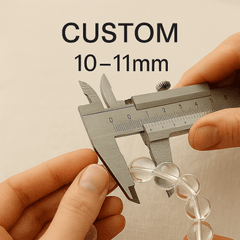Crystal Bracelets: Materials, Craftsmanship, and Everyday Uses
Introduction
Crystal bracelets are among the most popular types of jewelry, combining natural beauty with versatile design. They can be made from polished gemstones, raw crystals, or synthetic materials, offering a wide variety of colors and styles for different preferences.
Materials Used in Crystal Bracelets
-
Natural Gemstones – Quartz, amethyst, citrine, rose quartz, obsidian, and others.
-
Semi-Precious Stones – Fluorite, aventurine, tiger’s eye, and jade.
-
Synthetic Crystals – Lab-created quartz or colored glass, providing affordability and consistency.
-
Mixed Materials – Crystal beads combined with metals like silver, gold, or stainless steel.
Craftsmanship & Design
-
Beaded Bracelets – The most common style, with round or faceted crystal beads strung on elastic or wire.
-
Wire-Wrapped Designs – Crystals encased in metal wire for a handcrafted look.
-
Chain & Charm Bracelets – Incorporating crystal pendants or chips into metal chains.
-
Custom Carvings – Some bracelets feature carved crystal pieces shaped into hearts, flowers, or geometric designs.
Everyday Uses
-
Fashion Accessories – Enhance both casual and formal outfits with natural elegance.
-
Gift Items – Popular choices for birthdays, anniversaries, and special occasions.
-
Collectibles – Unique crystal types and rare colors make them attractive to collectors.
-
Wellness Jewelry – Often marketed for personal well-being and mindfulness.
Care & Maintenance
-
Cleaning – Wipe with a soft cloth; avoid harsh chemicals that may damage crystal surfaces.
-
Storage – Keep in a jewelry box or soft pouch to prevent scratches.
-
Durability – Some crystals are softer (like fluorite) and require extra care compared to harder stones (like quartz).
Conclusion
Crystal bracelets are more than decorative accessories—they represent craftsmanship, natural diversity, and modern style. With a wide range of materials and designs, they continue to be a staple in jewelry collections worldwide.












Leave a comment